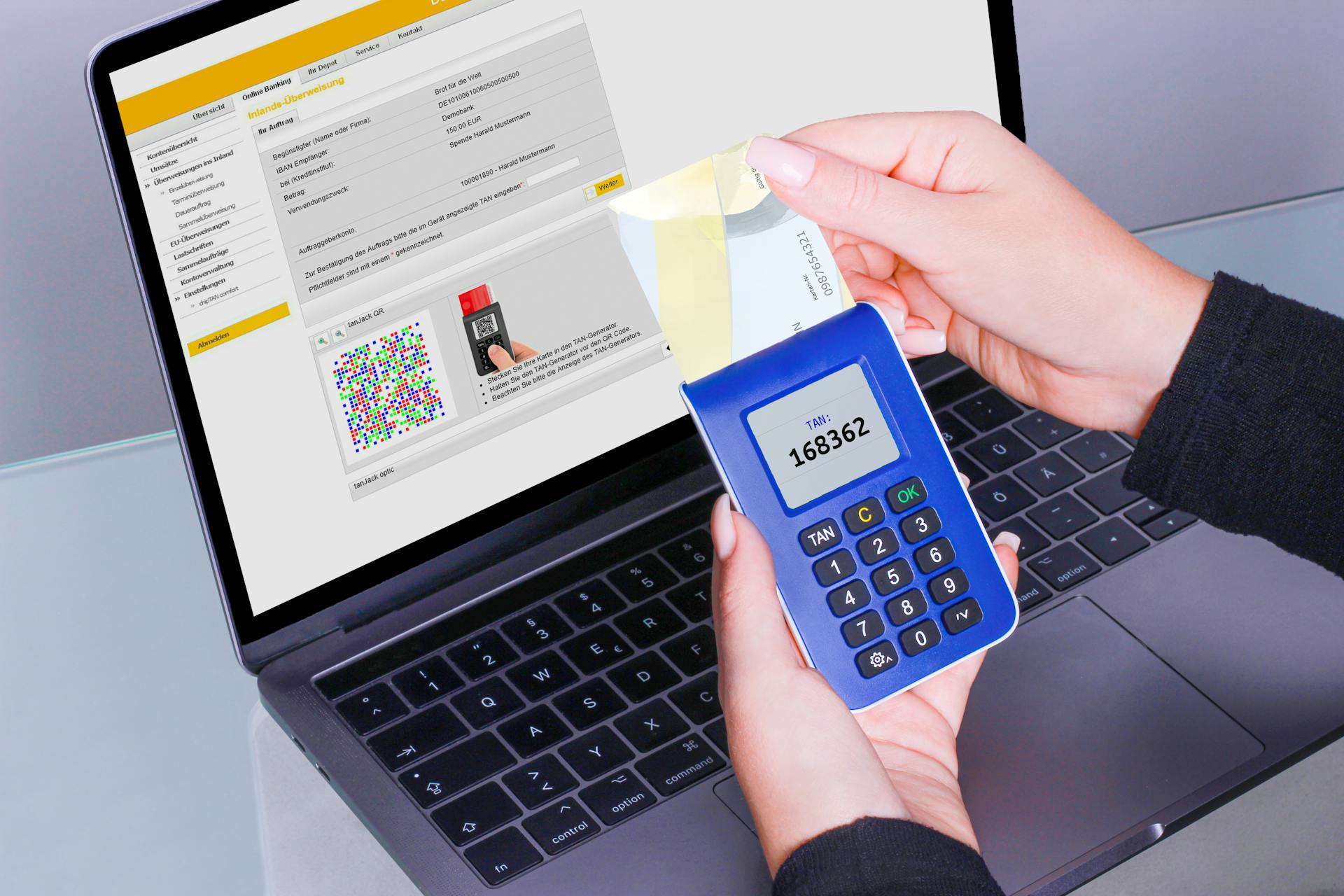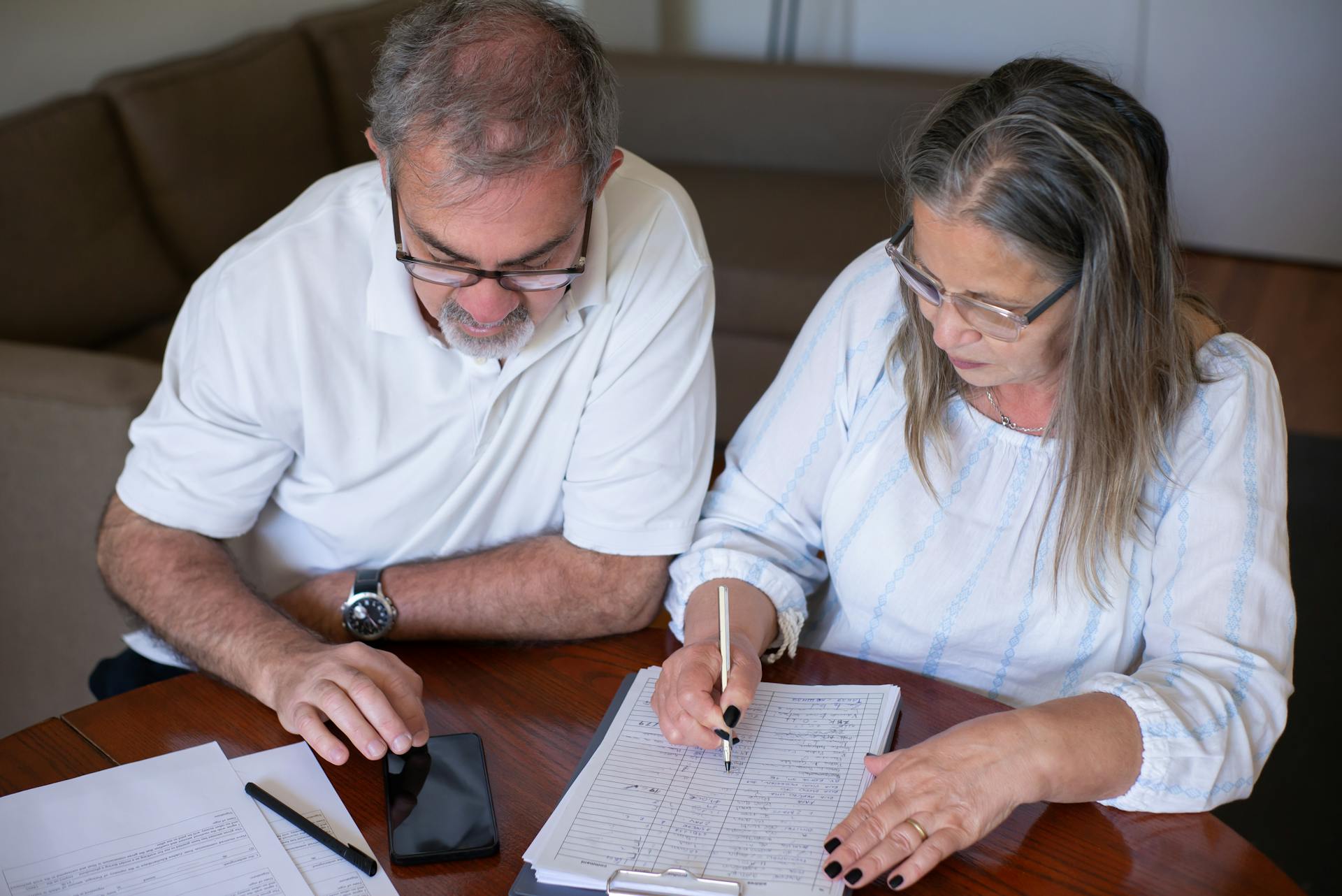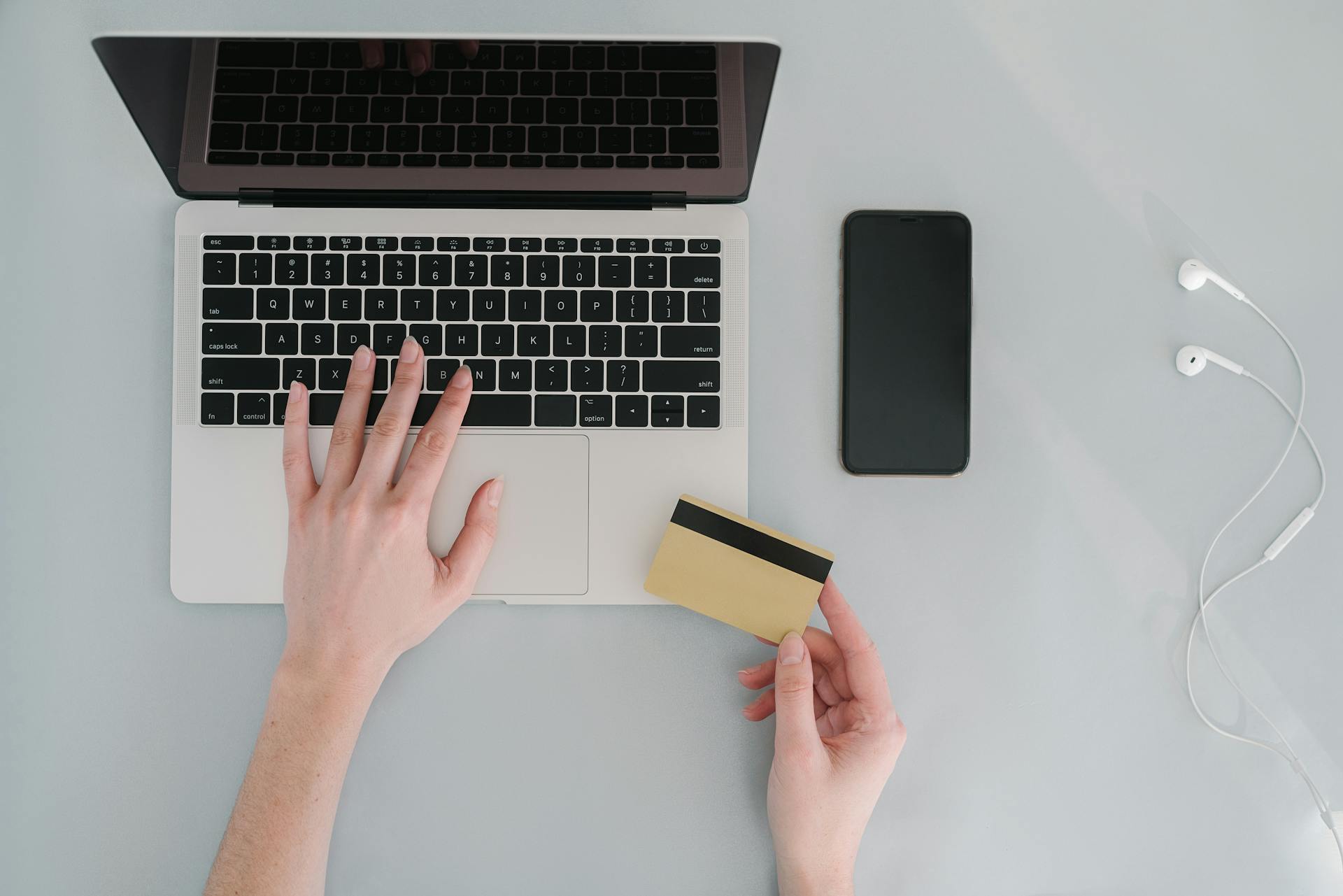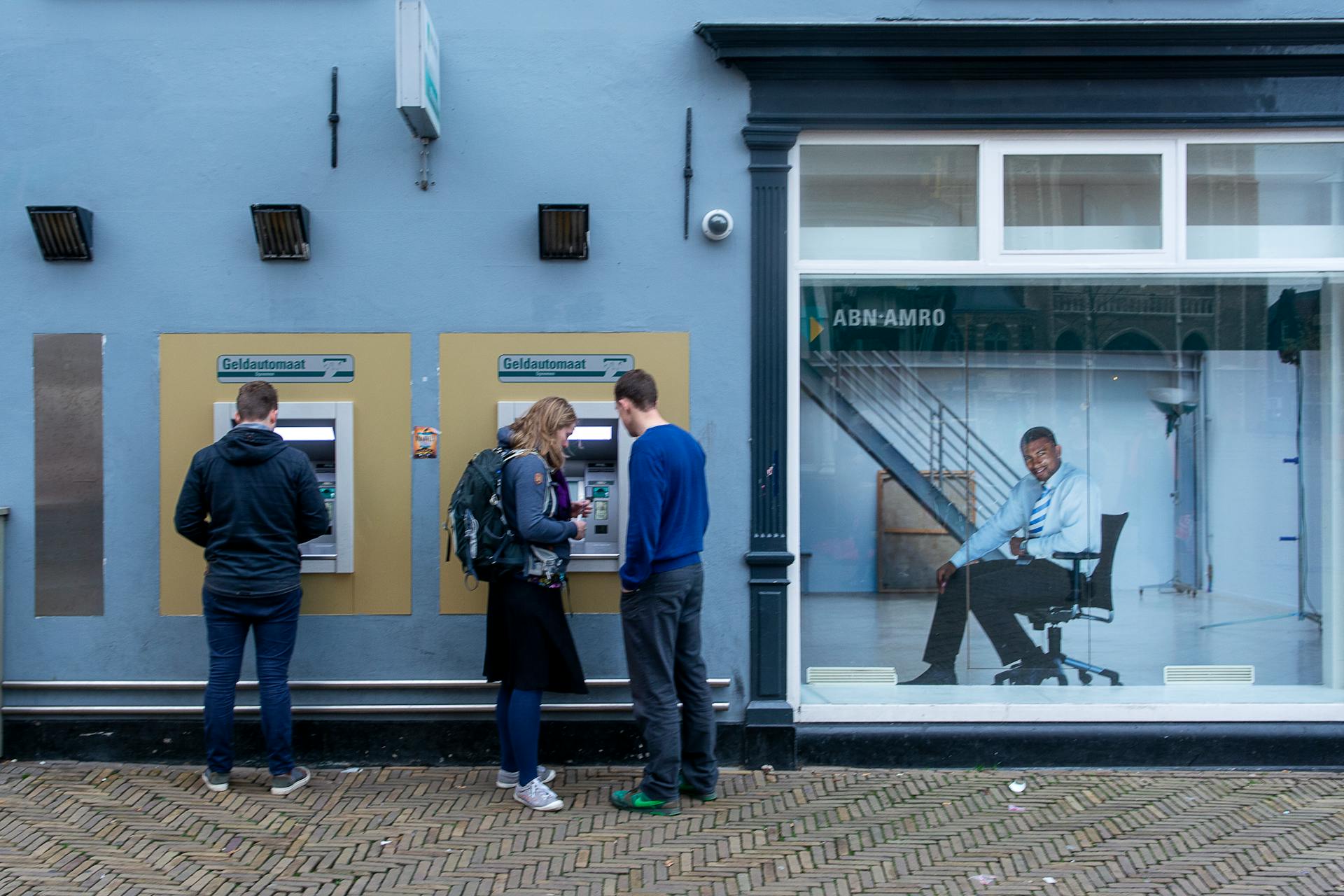
To start online banking, you'll need a computer or mobile device with a stable internet connection. Most banks require you to register for their online banking service, which can usually be done in a few minutes.
First, gather the necessary information, such as your account number, Social Security number, and date of birth. This data will be used to verify your identity.
Next, visit your bank's website and look for the online banking section. You can usually find this by clicking on the "Login" or "Online Banking" tab at the top of the page.
Once you've accessed the online banking section, follow the prompts to register for an account. This will typically involve entering your personal details, creating a username and password, and setting up security questions.
Expand your knowledge: Financial Institution Routing Number
Getting Started
To get started with online banking, you'll need to open an account. There are free online bank accounts that require no deposit, but some may ask for a minimum opening deposit.
You can fund your account with a blank check, transfer money from another account, or use a credit or debit card.
Gathering Information
To start online banking, you'll need to gather some essential documents and information. This includes your Social Security number or another identification number, a valid driver's license or government-issued ID, and debit card information or routing and account numbers for another bank account you own.
You can find the routing and account numbers on a check or by logging in to your existing account's online dashboard.
Some banks may also ask for a bill with your name and address on it, and other bank account routing and account numbers to fund the new account.
Here's a list of the common documents and information you'll need:
- Social Security number or identification number
- Valid driver's license or government-issued ID
- Debit card information or routing and account numbers for another bank account
- A bill with your name and address on it (optional)
Consider the Type
Before you start opening bank accounts, it's essential to consider the type of account you want. You can have checking and savings accounts at the same bank, but it's also okay to have them at different banks.
Checking accounts are great for everyday transactions, as they often come with debit cards, bill pay, and ATM access. Savings accounts, on the other hand, focus on storing funds and earning interest.
For your interest: What Is a Checking Account

You can open a single account, where you're the sole owner, or a joint account, which you co-own with someone else. Joint accounts are often used by couples or families.
To make the most of your accounts, compare the different options offered by the financial institution. Look for checking accounts with no monthly fees or easy ways to avoid them, and consider savings accounts with high interest rates.
Here are some key things to consider when choosing your accounts:
- Checking accounts: look for no monthly fees or easy ways to avoid them
- Savings accounts: consider high interest rates
- Account type: single or joint account
Choose the Type
Choosing the right online bank account can be overwhelming, but let's break it down. First, consider what you'll be using your account for. If you're building an emergency fund, a savings account is the way to go.
You'll want to look into high-yield savings accounts, which typically offer higher interest rates than traditional savings accounts.
Here are some types of accounts to consider:
- Checking accounts
- High-yield savings accounts
- Money market account
When choosing your account, annual percentage yields, fees, transaction limits, and digital tools are key factors to consider. Many banks offer similar products, but the details will vary.
Some online checking products don't charge monthly fees, so be sure to look for those if you're on a tight budget.
For another approach, see: Wells Fargo Overdraft Fees
Gather Documentation

You'll need to collect some essential documents to open a bank account online. This includes your Social Security number or identification number if you're a noncitizen, and a valid driver's license or government-issued ID.
To verify your identity, you may also need to provide a bill with your name and address on it, and the routing and account numbers for another bank account you own.
Some banks may ask for additional information, such as your address and birth date, or other bank account information to fund the new account.
Having all the necessary documents ready can help speed up the application process and reduce frustration.
Here's a list of the documents you'll typically need to gather:
- Social Security number or identification number
- Valid driver's license or government-issued ID
- Bills with your name and address on them
- Routing and account numbers for another bank account
Make sure you have these documents readily available to avoid any delays in opening your online bank account.
Depositing a Check
Depositing a check can be a hassle, but it doesn't have to be. You could drive to your bank or credit union to deposit with a teller or through the ATM.
Many banks now let you deposit checks electronically if you have a smartphone or a scanner. This can save you time and gas money.
Gas prices are high these days, and every mile matters, especially if you live far from your bank.
Setting Up Online Banking
To set up online banking, start by visiting the bank's website and looking for the "enroll in online banking" option. You'll need to provide some basic information like your name, address, and phone number.
Choose the type of account you have, such as checking or savings, and be prepared to verify your identity with your ATM or debit card number. Don't worry if you're not tech-savvy – it's pretty simple!
Give the bank the required information, and you'll be asked to read and agree to the online banking terms and conditions. This is a normal part of the process, so don't hesitate to ask for help if you need it.
Create a username and password for your online banking identity, and set up security questions to protect your account. It's a good idea to have your banking statement and debit card handy in case you need to verify any information.
Once you've finished the enrollment process, you can log in and check your accounts. If you have any problems, don't worry – just call your bank's customer service for help.
Worth a look: Ubs Interview Process
Security and Convenience
Online banking offers a range of security features to protect your account, including account alerts, real-time debit card controls, and biometric facial recognition and fingerprint access through the mobile app.
These tools help keep your account safe and give you peace of mind, allowing you to bank with confidence.
Some online banks also offer customizable alerts and budgeting tools to help you stay on top of your finances and avoid overdrafts.
Here are some key security features to look out for:
- Account alerts to notify you of suspicious activity
- Real-time debit card controls to freeze or unfreeze your card
- Biometric facial recognition and fingerprint access for secure login
With online banking, you can also enjoy the convenience of being able to bank from anywhere, at any time, as long as you have a stable internet connection.
Access and Convenience
You can bank from anywhere with free Online and Mobile Banking, making it easy to view balances, set alerts, and make loan payments.
Online banking is available 24/7, so you can transfer funds, pay bills, or deposit checks at any time, whether it's during the day or on the weekend.
With digital banking, you can set up automatic bill payments, eliminating the need to write checks or worry about payments arriving on time.
You can also deposit checks remotely using your smartphone, snapping a picture and using your bank's "remote deposit" feature to deposit checks to your account from home.
Some banks even offer free online bank accounts with no minimum opening deposit required.
To get started with online banking, you can follow the instructions provided by your bank or credit union, which often include setting up Quicken with Direct Connect.
You can also access your account balance quickly online, checking whether there's enough cash to cover upcoming bills or if deposited checks have been posted.
With online banking, you can log onto your account whenever you want, even if you can't get to the bank or if it's closed when you need to make a transaction.
Here are some convenient features to look for in an online bank:
- Remote deposit
- Automatic bill payments
- Online account management
- Mobile banking app
- Money Insights, a planning and budgeting tool
Secure
At Northwest Bank, security is a top priority. Our online banking system offers cutting-edge security features to keep your account safe.
You can enjoy peace of mind with features like account alerts, real-time debit card controls, and biometric facial recognition and fingerprint access through our mobile app. This means you can monitor your account activity and respond quickly to any suspicious transactions.
Our online banking system also includes Zelle, which allows you to safely send money to anyone instantly. This is a huge time-saver and eliminates the need to send checks or money orders.
Here are some ways you can secure your money with Northwest Bank:
- Get a better view of your money with customized alerts and budgeting tools
- Check your credit score to see where you stand
- Use real-time debit card controls to monitor your card activity
By taking these steps, you can protect your account and enjoy a secure online banking experience.
Sources
- https://www.nerdwallet.com/article/banking/open-bank-account-online
- https://www.northwest.bank/personal/checking/online-and-mobile-banking/
- https://www.capitalone.com/bank/money-management/banking-basics/opening-a-bank-account-online/
- https://www.bankrate.com/banking/how-to-open-a-bank-account-online/
- https://getcarefull.com/articles/how-to-sign-up-for-online-access-to-your-bank-account
Featured Images: pexels.com

